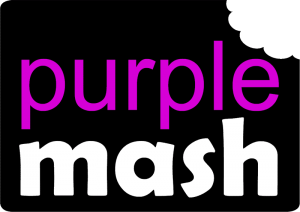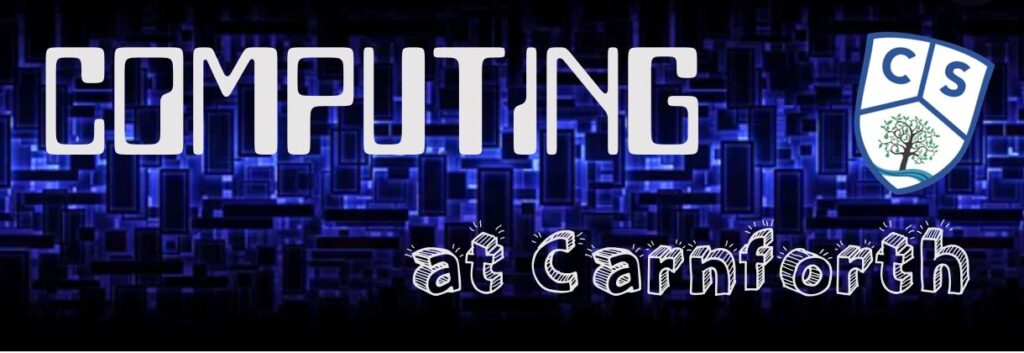Intent
In line with the 2014 National Curriculum for Computing, our aim is to provide a high-quality computing education, which equips children to use computational thinking and creativity to understand and change the world. We believe Computing and safeguarding go hand in hand and at Carnforth we provide a significant focus on internet safety both inside and outside of the classroom setting. Woven throughout our Computing curriculum is PSED, focusing on the importance of children knowing how to safe online and why this is so important for themselves as well as others. As global citizens, it is the aim for children to have a secure grasp of how computers and the internet can be a tool for good with an awareness of the benefits and implications for technology. We want children to understand the growing impact of computing on the world around them.
Dialogue is of high importance in the teaching of computing. Teachers prioritise opportunities for children to discuss and work collaboratively to solve problems, whilst building on key subject specific vocabulary to give clarity and demonstrate their understanding in their explanations. Children are taught key knowledge about how computers and computer systems work, as well as how they are designed and programmed.
By the time they leave Carnforth School, children will have gained key knowledge and skills in the three main areas of the computing curriculum: computer science (programming and understanding how digital systems work), information technology (using computer systems to store, retrieve and send information) and digital literacy (evaluating digital content and using technology safely and respectfully). We want our children to be confident with the language around computing and to apply it to develop clarity in their communication. Through specific knowledge organisers, key vocabulary is identified and taught to children to support them in successfully accessing and deepening their knowledge of the computing curriculum. The objectives within each strand support the development of learning across the key stages and EYFS, ensuring a solid grounding for future learning and beyond. We want our children to aim high and have an awareness of the opportunities the future could hold for them as:
- Software Engineers
- Computer programmers
- Software Developers
- Network architects
- Big Data Analysts
- Artificial Intelligence
- Administrators
We want pupils to use computational thinking and creativity to make sense of and change the world. To demonstrate reasoning through the justification their decisions, working independently as well as part of teams. We want the children to apply a growth mindset approach to their learning and demonstrate resilience when tackling challenges, they agree presented with. At Carnforth, we know the immense value that technology plays not only in supporting Computing and whole school curriculum but over all in the day-to-day life of our school to understand how Computing links in with mathematics, science, and design and technology. Through the use of Microsoft Office, the children are competent with the basic skills and apply them across the curriculum.
‘I like that we get to go on Purple Mash because it’s not just fun to play on but it really helps you with learning about computing.’ – Ruby
Implementation
Through our Purple Mash subscription our teachers can deliver thematic, cross curricular lessons that also follow children’s interests and provide flexibility. Computing teaching at Carnforth is practical and engaging and a variety of teaching approaches and activities are provided based on teacher judgement and pupil ability. Teachers and pupils are also aware of the importance of health and safety and pupils are always supervised when using technology and accessing the internet. Children have access to a range of technological devices and all year groups have the opportunity to use a range of devices and programmes for many purposes across the wider curriculum, as well as in discrete computing lessons. Employing cross-curricular links motivates pupils and supports them to make connections and remember the steps they have been taught.
The implementation of the curriculum also ensures a balanced coverage of computer science, information technology and digital literacy. The children will have experiences of all three strands in each year group, but the subject knowledge imparted becomes increasingly specific and in depth, with more complex skills being taught, thus ensuring that learning is built upon. For example, children in Key Stage 1 learn what algorithms are, which leads them to the design stage of programming in Key Stage 2, where they design, write and debug programs, explaining the thinking behind their algorithms.
‘I like going on Word, Excel and the Microsoft apps as they help us with our learning and also can help us in the future at high school and college.’ -Krish
‘I like going on Word, Excel and the Microsoft apps as they help us with our learning and also can help us in the future at high school and college.’ -Jayden
‘Sometimes we use Excel in maths to help us.’ -Austin




